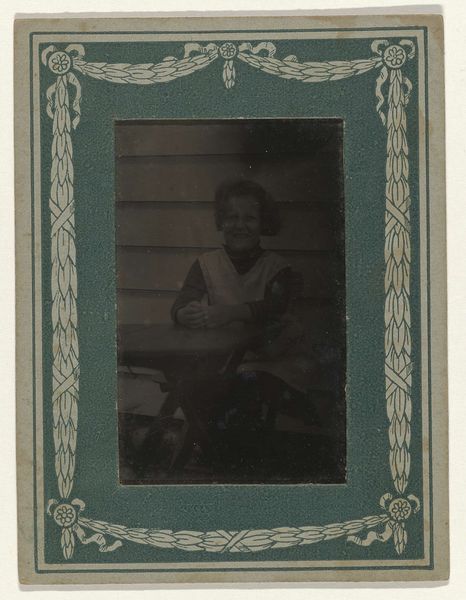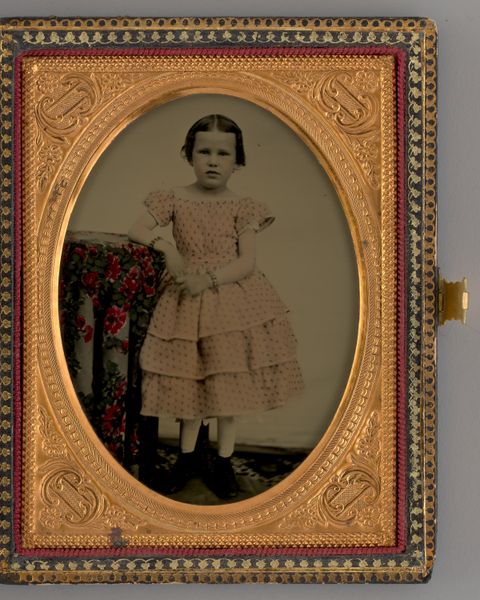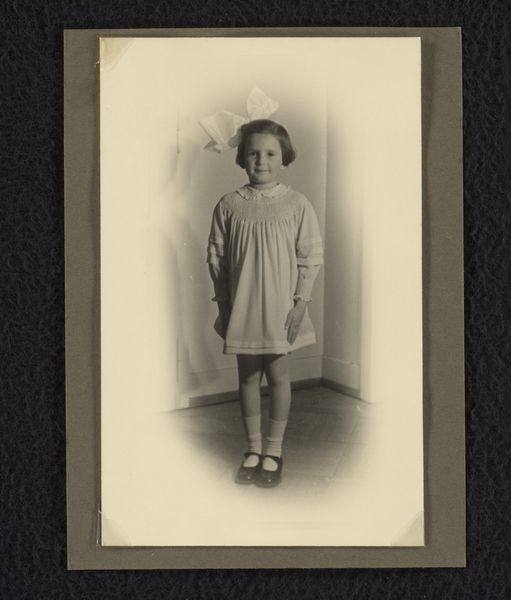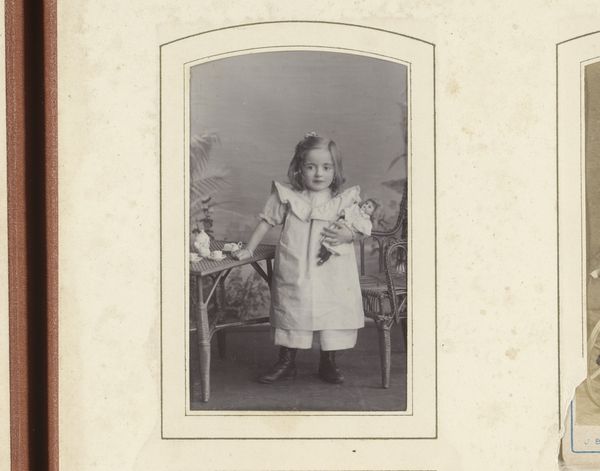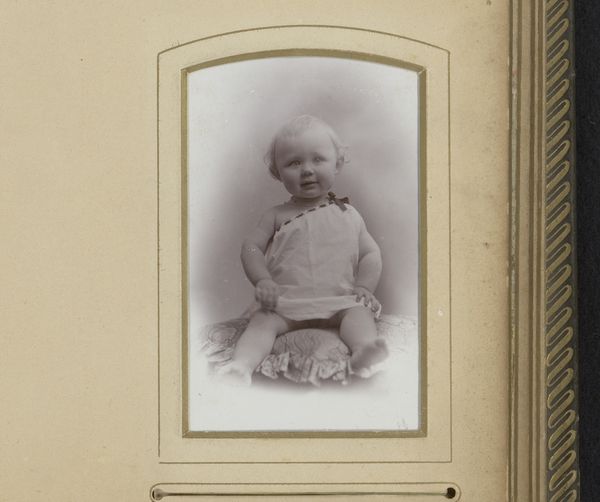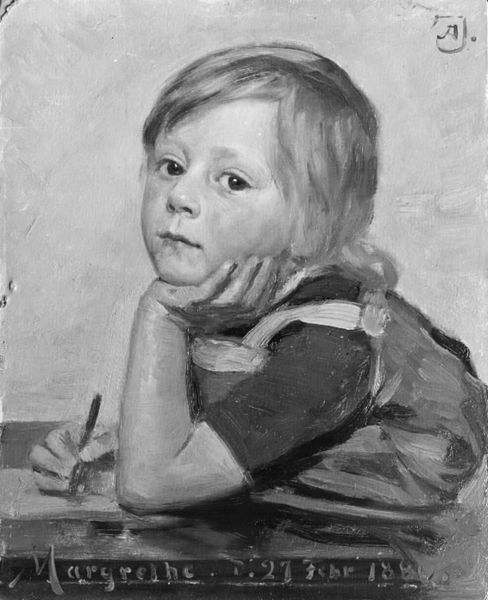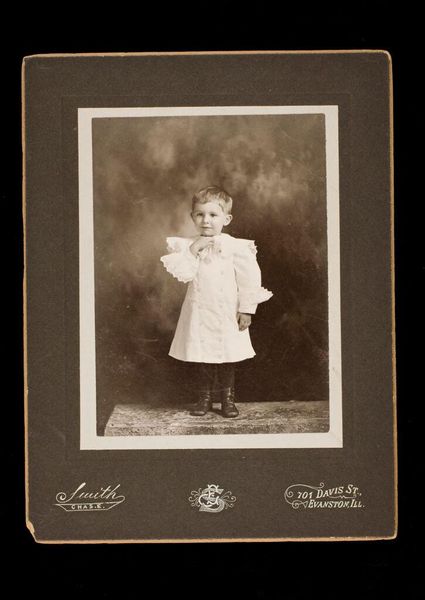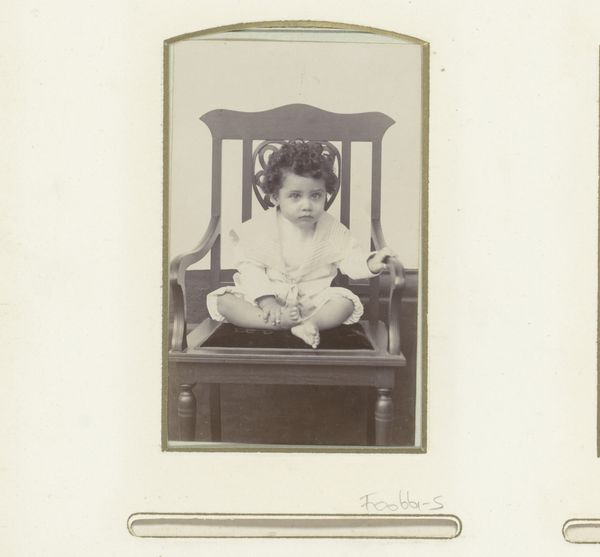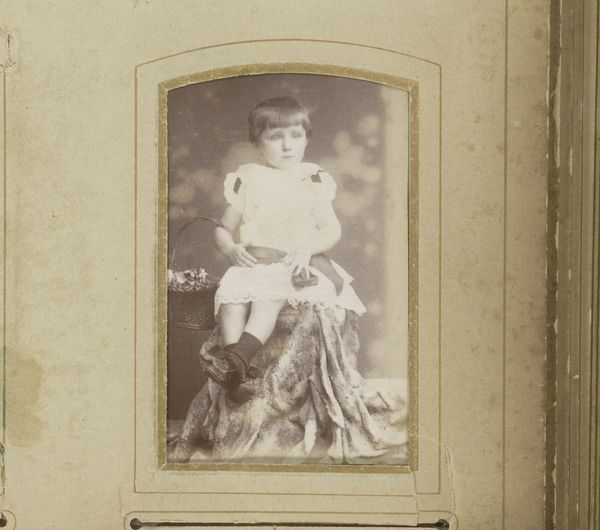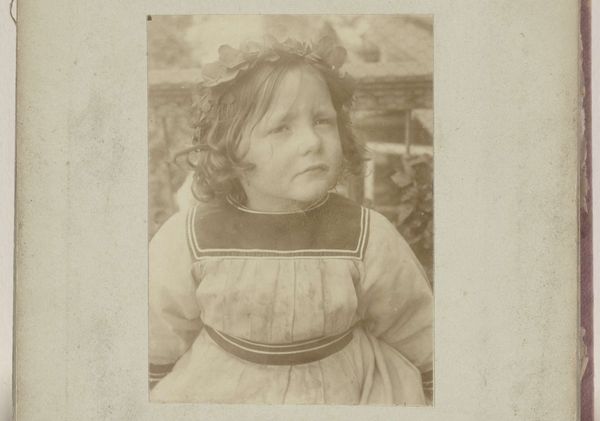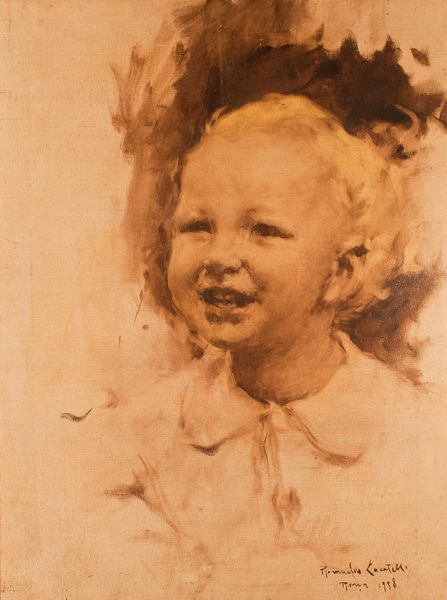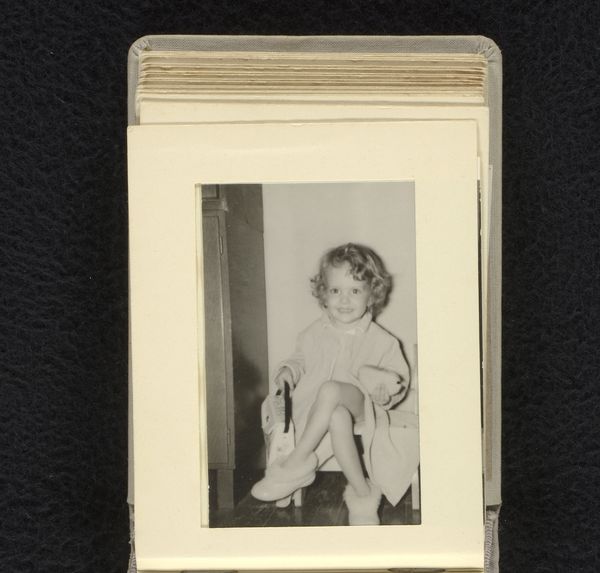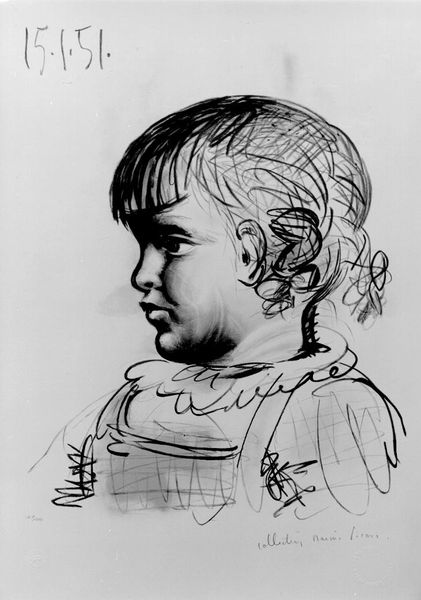
photography, gelatin-silver-print
#
portrait
#
black and white photography
#
photography
#
black and white
#
gelatin-silver-print
#
monochrome photography
#
monochrome
#
monochrome
Dimensions: image: 80.01 × 80.01 cm (31 1/2 × 31 1/2 in.) sheet: 108.59 × 101.6 cm (42 3/4 × 40 in.)
Copyright: National Gallery of Art: CC0 1.0
Curator: Welcome. We’re looking at Rosalind Solomon’s “New York,” a gelatin-silver print from 1987. Editor: What a sweet and rather arresting image. The carefree expression on the child's face is remarkable. Such genuine happiness radiating from the photograph. Curator: Solomon's process here, using gelatin silver, lends the work its striking tonal range. Considering the date, the black and white feels deliberate, perhaps a conscious harkening to earlier portraiture traditions, while still pushing on their limits through raw emotional intensity. It makes me think about what the relative availability of photography materials would have been. Editor: Absolutely. Black and white inherently evokes the past, history. A little girl, a simple cross necklace...symbols of innocence, faith. And this being titled "New York," despite seeming so domestic, places these signifiers within the context of urban, possibly modern alienation. Is that why she juxtaposed these different concepts? Curator: Well, it brings to mind that portraiture in photography at the time was being deconstructed. A renewed interest in the power dynamics, labour and exploitation involved with the production of the work - especially in portraiture. You need time, access, materials - it all impacts the final print. Editor: You're right, there's the implicit social fabric, but the direct gaze of that happy child overrides those readings. A doll at her side too, offering another symbol of childhood naivete. She certainly framed these components skillfully in an evocative whole. Curator: It’s the material realities – silver, gelatin, the darkroom – that provide the conditions through which we access and interpret that gaze, that imagined "naiveté." But to see how these material realities shape that interaction feels important. Editor: Ultimately, it remains an image filled with light. I feel hopeful looking at it and re-reading Solomon's own personal history within it offers many additional paths. Curator: Precisely. Seeing the tangible means through which that light and darkness come to exist within our grasp gives us, maybe, an increased grasp on our existence, on how images continue to resonate even now.
Comments
No comments
Be the first to comment and join the conversation on the ultimate creative platform.
